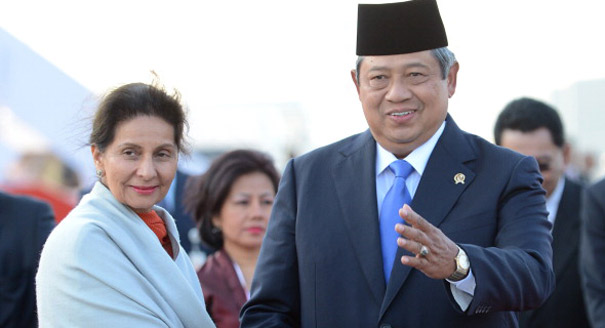Source: Bulletin of Indonesian Economic Studies
Introduction
India and Indonesia are, respectively, the world's second and fourth most populous countries and, alongside the US, among its three largest parliamentary democracies. Together, they are home to more Muslims than the Middle East, North Africa, Europe and the Americas combined;1 they are also known for their diverse ethnic, linguistic and religious mix.2 They proclaimed independence from their colonial masters within two years of each other – Indonesia in 1945, India in 1947.3 At that time, their per capita incomes were similar,4 and their average growth in per capita income was virtually identical between 1949 and 1968 (1.4% a year). Both countries followed quasi-socialist economic policies in their early post-independence years, only to abandon them later in favour of market-oriented policies. Prime Minister Nehru and President Sukarno were leaders in their independence struggles, nationalists in their domestic and foreign policies (both sought economic self-sufficiency and were among the five political leaders in the developing world who established the non-aligned movement5) and socialist in their approach to development.
Yet India's and Indonesia's journeys have diverged over the last half-century, and especially in the past decade. Indonesia was the first of the two to initiate economic reforms (in 1967) and experienced an immediate acceleration in growth, which it then sustained for the next 30 years. India followed a quarter-century later, and while it also enjoyed a surge in productivity, its per capita income is now less than half Indonesia's (but more than three-quarters if measured in 2005 purchasing-power-parity (PPP) dollars).6 Indonesia's export strength now appears to lie more in commodities and processed raw materials than in manufacturing; India's appears to lie in services exports, particularly those related to software development and business-process outsourcing. India has a federal government, although its public finances are largely centralised; Indonesia is a unitary state, but its public finances are substantially decentralised. India lags behind Indonesia in several social areas, but, unlike Indonesia, it has a few centres of excellence in education, research and medicine that are near world-class. And Indonesia developed a robust democracy after President Soeharto's departure, in 1998, whereas India's democracy – albeit noisy and chaotic – flourished throughout its entire post-independence history (except during the ‘emergency’ of 1975–77).
Today, both economies enjoy robust growth, are members of the G20 and, together with China, are shifting the global centre of gravity towards Asia.7 But both also face the common challenge of sustaining rapid growth at a time of slow and uncertain global recovery and elevated and volatile commodity prices. Neither country can afford growth to slow, because of their need to create jobs and reduce poverty. Although the poverty rate has been declining in both countries, it remains high. More important, the near poor – those with an income within 20% of the poverty line – represent 12% of Indonesia's population and 15% of India's.8 The near-poor are a small income shock away from falling into poverty. Not only is rapid growth critical in reducing poverty, but with rapid growth comes structural change – enabling those in low-productivity jobs to move into more-productive, better-paid jobs.
This paper contends that both India and Indonesia have considerable potential to become more productive by facilitating changes in the structure of the economy. Increasing the share of manufacturing in GDP, in particular, is likely to stimulate growth and create jobs, in part because it is relatively under-developed in both economies, and also because it is uniquely capable of expanding output and employment. But rapid growth in manufacturing requires the transfer of resources, especially labour, from less productive areas of agriculture and services. This paper focuses on how the policies of the two countries compare in achieving this objective.
The first section of this paper examines why the current pattern of growth in output and employment in both India and Indonesia is unsustainable, and why manufacturing will be important in the decades ahead. The second explores how the two countries compare in four policy areas necessary for sustainable growth in manufacturing: the trade, investment and macroeconomic framework; infrastructure development and the primacy of healthy urban areas; human-capital development; and flexibility in factor markets. These may be economy-wide policy areas, but they are critical for growth in manufacturing (Aswicahyono, Hill and Narjoko 2011). The third section reviews the political-economy dimensions impeding reforms. The fourth section concludes.
Read the full text of this article at the Bulletin of Indonesian Economic Studies
1 Indonesia and India have a total Muslim population of about 380 million; the Middle East, North Africa, Europe and the Americas have about 370 million (Pew Research Center 2011).
2 If languages reflect ethnic diversity, then India and Indonesia are remarkably diverse. The Indian constitution recognises 22 languages, 30 are spoken by more than a million native speakers each and 122 are spoken by more than 10,000 native speakers each (2001 Indian Census). While virtually every Indonesian speaks Bahasa, more than 700 languages are still used in different parts of the country.
3 Indonesia proclaimed independence on 17 August 1945, although the Dutch did not recognise this until 27 December 1949. See <http://www.indonesia.go.id/en/indonesiaglance/geography-indonesia>.
4 In 1990 international Geary–Khamis prices, India's per capita income in 1949 was $624 and Indonesia's was $763 (Maddison 2008).
5 The other leaders of the non-aligned movement were Nasser of Egypt, Tito of Yugoslavia and Nkrumah of Ghana.
6 India's gross national income per capita in 2011 was $1,410, compared with Indonesia's $2,940; India's GDP per capita in 2011 was $1,489 ($3,652 in PPP terms) whereas Indonesia's was $3,495 ($4,668 in PPP terms).
7 For comparisons of India and China, see Bardhan (2010), Gulati and Fen (2007), Smith (2007), and Winters and Yusuf (2007). For a comparison of China and Indonesia, see Hofman, Zhao and Ishihara (2007). For a comparison of India and Indonesia, see Lankester (2004) andThee ( 2012).
8 Author's calculation, using Povcal <http://iresearch.worldbank.org/PovcalNet/>.
Van Tran, Junior Fellow, provided research assistance.





